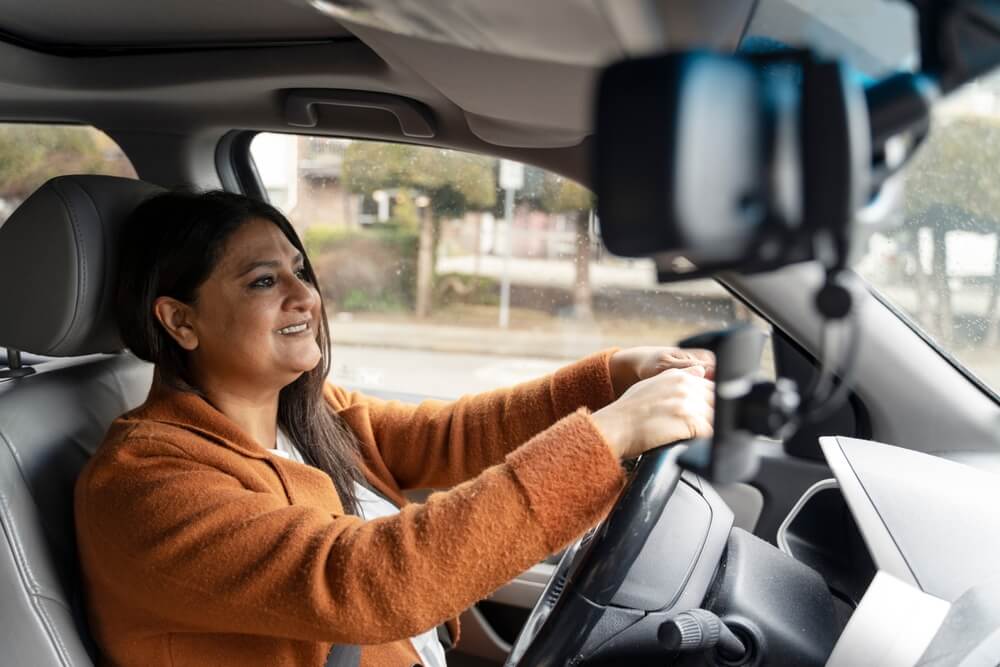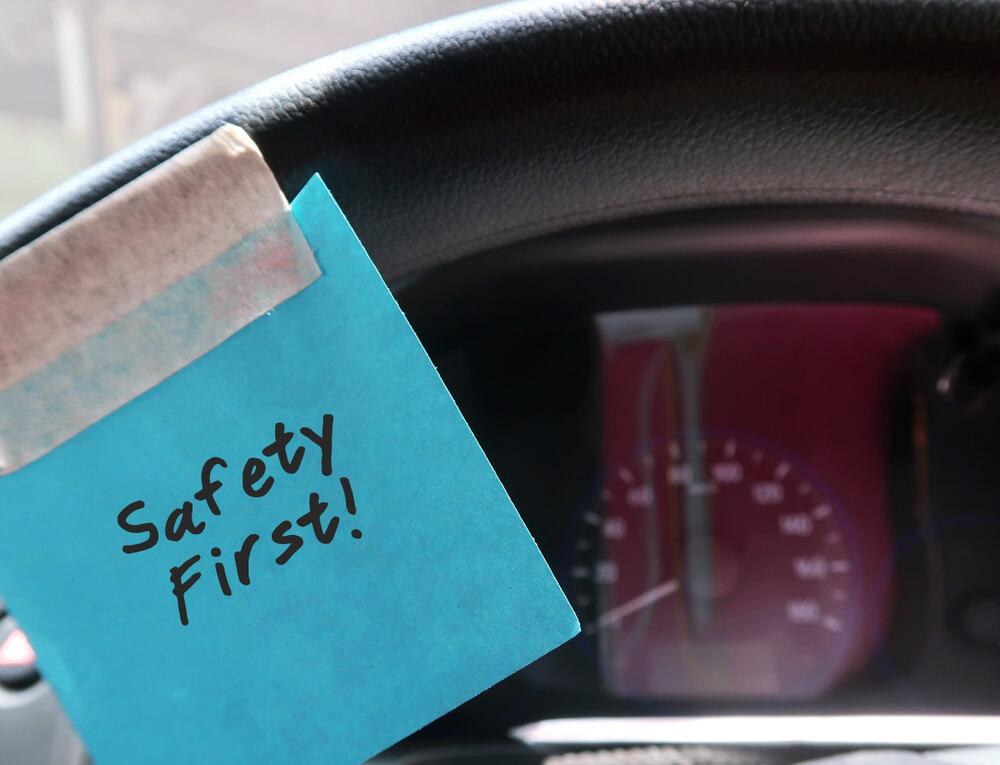victims for over 25 years.
Teaching Kids to Be Responsible Drivers: A Guide for Parents
Teaching your child to be a good driver starts long before that precious cherub reaches 15 and can get a permit. In fact, every day that you drive your kid around, you are teaching them how to drive like you. Now, stop and think: Are you driving the way that you hope your child ultimately drives?
Just as you model the ways that you want your child to treat other adults, tackle their chores, and say “please and thank you,” you are modeling their future driving skills today.
In this article, I will explore various ways that you can teach your child to be a good driver, emphasizing the importance of modeling good behavior, maintaining your vehicle, avoiding distractions, planning routes for long trips, and respecting all road users.
Modeling Good Driver Behavior

Children often learn by observing their parents or caregivers. Therefore, one of the most effective ways you can teach them about responsible driving is by modeling good behavior on the road. Here are some key aspects to consider:
- Obey Traffic Rules: Demonstrate the importance of obeying speed limits, stop signs, and traffic signals. Explain the reasons behind these rules, such as ensuring safety for all road users.
- Respect for Others: Show courtesy and patience towards other drivers, even in frustrating situations. Teach your child about the importance of sharing the road and yielding when necessary.
- Seatbelt Safety: Always wear your seatbelt, and ensure everyone in the vehicle does the same. Explain that seatbelts are a non-negotiable safety measure.
- No Impaired Driving: Never drive under the influence of alcohol or drugs. Stress the dangers of impaired driving and the legal consequences it carries.
- No Road Rage: Avoid aggressive driving behaviors, such as road rage and aggressive tailgating. Discuss the importance of keeping emotions in check while driving.
Staying Calm in Challenging Situations on the Road

Traffic can be frustrating, and encountering aggressive or inconsiderate drivers is not uncommon. However, it’s essential to teach children how to stay calm and composed in challenging situations. Here’s how:
- Explain Patience: Emphasize the importance of patience and restraint in traffic. Explain that getting upset or angry won’t change the situation but can lead to accidents.
- Deep Breathing: Teach your child techniques for managing stress, such as deep breathing or counting to ten, to help them remain calm while driving.
- Lead by Example: Model patience and a calm demeanor in traffic. Children are more likely to emulate your behavior when they see you handle stressful situations with composure.
Vehicle Maintenance

Another crucial aspect of responsible driving is taking care of your vehicle. Teaching children about vehicle maintenance not only ensures their safety but also instills a sense of responsibility. Here’s how to go about it:
- Regular Maintenance: Explain the importance of routine vehicle maintenance, such as checking oil levels, tire pressure, and brake fluid. Involve your child in simple maintenance tasks to familiarize them with the basics.
- Safe Driving Practices: Discuss how proper maintenance contributes to safe driving. For example, well-maintained brakes and tires are essential for stopping safely.
- Emergency Preparedness: Teach your child what to do in case of a breakdown or other vehicle-related emergencies. Make sure they know how to change a tire and have access to essential tools.
Avoiding Common Distractions in the Car

Distracted driving is a significant cause of accidents. Teaching children to focus on the road and avoid distractions is crucial for their safety. Here’s how to tackle this issue:
- No Phone Use: Stress the importance of not using phones or other electronic devices while driving. Explain the dangers of texting, calling, or using social media behind the wheel.
- Eating and Drinking: Encourage your child to eat and drink before or after driving, not while on the road. Explain how eating or drinking can divert their attention from driving.
- Keep Conversations Light: While it’s fine to have conversations with passengers, remind your child to keep them light and avoid heated arguments or intense discussions while driving.
Planning Driving Routes for Long Trips

Effective route planning is a crucial aspect of responsible driving, especially on longer trips that you don’t take all the time. By teaching your child how to plan routes in advance, you help them become more prepared and confident on the road. Here’s how to do it:
- Use Navigation Apps: Show your child how to use navigation apps responsibly to plan routes and check for real-time traffic updates.
- Discuss Alternate Routes: Explain the importance of having alternative routes in mind in case of unexpected road closures or heavy traffic.
- Emergency Information: Ensure your child knows how to find nearby hospitals, gas stations, and other essential locations on their route.
Watching for Bicyclists and Pedestrians as a Driver

Responsible driving also involves being aware of and considerate toward other road users, including bicyclists and pedestrians. Teach your child to watch out for them:
- Explain Right of Way: Teach your child about the right of way for pedestrians at crosswalks and intersections. Emphasize the importance of yielding to them.
- Bicycle Safety: Discuss the rules and precautions for sharing the road with cyclists. Remind your child to maintain a safe distance when passing cyclists.
- School Zones: Explain the significance of school zones and the need to drive slowly and attentively when children are present.
Being a Role Model Behind the Wheel

Ultimately, the most powerful way to teach children responsible driving is by being the kind of driver you want them to become. Your actions and attitudes on the road will leave a lasting impression on your child. Here are some additional tips on being a positive role model:
- Open Communication: Encourage open dialogue with your child about your driving experiences. Share stories of challenges and successes, and explain how you handle different situations.
- Acknowledge Mistakes: If you make a driving mistake or encounter a situation where you could have acted better, admit it and discuss what you could have done differently. This demonstrates that everyone can improve their driving habits.
- Passenger Role: When your child reaches the legal driving age and starts practicing, be a supportive and patient passenger. Offer guidance without being overly critical.
Finally, remember that when it’s time to hand over the keys, you still have the authority to take that car away if your teen driver doesn’t follow your rules.
It’s a good idea to set out expectations up front using a Parent Contract for Teen Drivers. And hey… if you expect your teen to follow these rules, you should probably also follow them!
Teaching children to be responsible drivers long before they reach driving age is a fundamental parental responsibility. (Imagine watching your child learn to drive and displaying your worst habits! Terrifying prospect.)
Remember that your actions as a role model are the most influential factor in this process, so practice what you preach and set a positive example on the road. By instilling these values and skills early on, you contribute to safer roads and prepare your child for a lifetime of responsible driving.
Free Consultation
Search For
Recent Articles
- Are all motorcycles created equal?
- Frequently Asked Questions about Personal Injury Attorneys
- How Do Personal Injury Attorneys Calculate Future Medical Expenses in a Car Crash Settlement?
- Ways to Increase Your Visibility When Riding Your Bicycle in Denver
- 5 Reasons to Hire a Personal Injury Attorney if a Loved One Is Injured
Categories
- Arvada
- Aurora
- Auto Accident eBook
- Auto Insurance
- Bicycle
- Bicycle/Motorcycle Accidents
- Bodily injury
- Car accidents
- Centennial
- Colorado
- Colorado Legislature
- community
- Concussion
- Denver
- distracted driving
- DUI Accidents
- Englewood
- Events
- Flood Insurance
- Fort Collins
- Highlands Ranch
- Hit and Run
- In The News
- insurance companies
- Lakewood
- Littleton
- Marijuana DUI
- Motorcycle Accidents
- Motorcycle Insurance
- Motorcycle Law eBook
- Motorcycles
- Newsletter
- Pedestrian
- Personal Injury Law
- Safe Driving
- Safety
- Scooters
- technology
- Thornton
- Tips
- Uncategorized
- vibrio vulnificus bacteria
- Videos
- Westminster
- Winter Driving
Archive
- March 2024
- February 2024
- January 2024
- December 2023
- November 2023
- October 2023
- September 2023
- August 2023
- July 2023
- June 2023
- May 2023
- April 2023
- March 2023
- February 2023
- January 2023
- November 2022
- September 2022
- April 2022
- March 2022
- February 2022
- January 2022
- December 2021
- November 2021
- October 2021
- September 2021
- August 2021
- July 2021
- June 2021
- May 2021
- April 2021
- January 2021
- December 2020
- November 2020
- October 2020
- September 2020
- August 2020
- July 2020
- June 2020
- May 2020
- April 2020
- March 2020
- February 2020
- January 2020
- December 2019
- November 2019
- October 2019
- September 2019
- August 2019
- July 2019
- June 2019
- May 2019
- March 2019
- February 2019
- January 2019
- December 2018
- November 2018
- October 2018
- September 2018
- August 2018
- July 2018
- June 2018
- May 2018
- April 2018
- March 2018
- February 2018
- January 2018
- December 2017
- November 2017
- October 2017
- September 2017
- August 2017
- July 2017
- June 2017
- May 2017
- April 2017
- March 2017
- February 2017
- January 2017
- December 2016
- November 2016
- October 2016
- September 2016
- August 2016
- July 2016
- June 2016
- May 2016
- April 2016
- March 2016
- February 2016
- January 2016
- December 2015
- November 2015
- October 2015
- September 2015
- August 2015
- July 2015
- June 2015
- May 2015
- April 2015
- February 2015
- December 2014
- November 2014
- October 2014
- September 2014
- July 2014
- June 2014
- May 2014
- April 2014
- March 2014
- February 2014
- January 2014
- October 2013
- October 2012
- September 2012
- August 2012
- July 2012
- February 2012
- August 2011
- March 2011
- October 2010